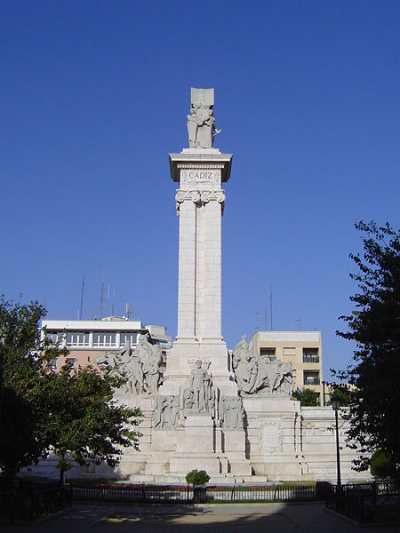The 1812 Spanish Constitution
It is known either as ‘la Constitución de Cádiz’ or ‘La Pepa,’ the latter because it was published on the day which is dedicated to San José – Pepe being the nickname for José. The document was given the female version of the nickname in line with ‘constitución’ being a feminine noun.
Spain’s first constitution, the historic document which was published by the Cortes of Cádiz on 19th March 1812, with the country in the midst of the Spanish War of Independence.
The events known as the Abdications of Bayonne in the spring of 1808, when Napoleon first forced Fernando VII to return the Spanish crown to his father, Carlos IV (who had previously abdicated in favour of his son in March of 1808 following the uprising at Aranjuez), and then Carlos IV to abdicate again to allow the Emperor to install his brother on the Spanish throne as José I, had left a vacuum of authority in the country. Local and provincial juntas had been established in areas outside French control, and in September 1808, a central junta was set up to act as the maximum government authority during the absence of the legitimate king.

Francisco de Goya - Alegoría de la Constitución de 1812
The Junta Central was forced to take refuge in Sevilla in December 1809, and in January 1810 moved to the Isla de León in Cádiz, today, San Fernando, where a regency was named, and preparations began for a meeting of the Cortes, to act as a national legislative body in the absence of the monarch. The first session of the Cortes was held on 24th September 1810 on the Isla de León, and two main groups soon formed among the deputies: the conservatives who supported maintaining the model of government prior to the outbreak of war, with absolute power residing in the person of the monarch; and the majority, the liberals, who supported going far beyond an interim government, with a new system of government designed to limit the power of the monarch and prevent corrupt rule.
The landmark document which followed is the most extensive of Spain’s constitutions, with 384 separate articles under 10 titles. It established sovereignty as residing in the nation, and the division of power into the legislative power – with a single parliamentary chamber – the judicial power, and the executive, with the monarch’s executive power limited by strict parliamentary control. A new administrative system was set up based on districts and provinces.
A limited suffrage was established, and individual rights to freedom, the press, education, and property were recognised. All citizens were seen as equal before the law. Catholicism was stated to be the only religious faith permitted, seen today as an article which was necessary to gain the support of the Church in the struggle against the French. The Inquisition was abolished.
The 1812 Constitution was in force after its first publication on 19th March 1812 until Napoleon’s defeat and Fernando VII’s return to Spain in 1814. He refused to recognise the document, and issued a decree on 4th May that year dissolving the Cortes and abolishing all the legislation that parliament had passed in his absence. Absolutist monarchy returned to Spain.
The Constitution was proclaimed for a second time after a military uprising in 1820, for a three-year constitutional period which is known as the ‘Trienio Liberal.’ The King revoked it again after French troops invaded in 1823 to restore Fernando to absolute power.
La Pepa was proclaimed for the third and final time in 1836, when it was restored by the Queen Regent, María Cristina de Borbón, following her husband’s death in 1833. It was succeeded by a new Constitution in 1837, the second written constitution of Spain’s history.

The Monument to the 1812 Constitucíon in the Plaza de España in Cádiz - Wikipedia
‘¡Viva la Pepa!’ – avoiding any mention of the Constitution itself - came to be a cry for the return to a liberal regime after Fernando VII overturned the 1812 Constitution. Today, it is a saying used in Spain and other Spanish-speaking countries to refer to situations of chaos and disorder. La Pepa is also the name the Development Ministry has chosen for a second bridge over the Bay of Cádiz, in memory of the historic 1812 Constitution.
